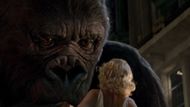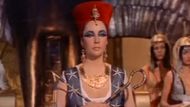Budget in the movie business is one of its most crucial aspects. Every film is allocated a set budget, which can either work in its favour by effectively managing the production costs or, in some cases, be used as a gimmick in high-end projects to grab the attention of the audience.
A film envisioned with the utmost grandeur often risks exceeding its initial budget. While this can sometimes lead to impressive yields that justify the expense, at other times, the makers are forced to confront the reality that they may have overshot their ambitions.
There are several factors that contribute to the budget set for a movie, from salaries for the cast to location costs to visual effects, so when the budget exceeds the initial estimate, it does so by millions at times.
Here is a list of 10 movies that exceeded their initial budget by millions.
Hugo, 2011

Martin Scorsese’s Hugo was envisioned as a heartfelt tribute to the magic of cinema and its pioneers. Through the character of Georges Melies played by Ben Kingsley, Scorsese honoured the imagination and artistry of cinema’s first visionaries. Although Scorsese has mostly been recognised for his gritty, adult dramas, Hugo marked the filmmaker's foray into family-friendly storytelling and 3D technology. He didn’t quite intend for the 3D aspect of the movie to be a mere gimmick, but as a means to immerse the audience in the intricate world of the Paris train station as well as to evoke the wonder of Melies’ fantastical films.
The budget for the movie was initially set to be at $100 million, but by the time the makers had already decided on the fate of the movie, they took out an additional $70 million, but the costs got shot down to $156 million, owing to the tax credits. The main reason why the initial cost exceeded so much was because of the 3D aspect of the movie. The film eventually made $185 million, which wasn’t enough to cover the overall costs of making the movie; therefore, it was considered a failure.
World War Z, 2013

The 2013 American action horror film was directed by Marc Foster, and was produced by Plan B Entertainment, which happens to be the lead star, Brad Pitt’s own production company. They secured the screen rights after a bidding war with Appian Way Productions over Max Brooks’ novel of the same name.
Brad Pitt, by then, had won several notable franchises as accolades, and World War Z was all set to be added to the list, but obviously things didn’t quite go according to plan. The film was initially decided to have a budget of $125 million, which obviously was too much for a zombie movie. The reshoots that took place between September and October 2012 made the budget skyrocket to $190 million, although some publications did mention that the budget reached around $269 million.
Since Brad himself was starring in the movie, it helped drive enough crowds to the halls to make the movie a hit at the box office. The movie ended up pulling an impressive amount of $540 million globally.
Avatar, 2009

The 2009 James Cameron-directed masterpiece, Avatar, was a visionary masterpiece that aimed at showcasing the clash between technological imperialism and the sanctity of nature, explored through the lens of an alien world. Cameron happens to believe in the notion, “go big or go home”, so his films obviously take years for completion, and on top of that, he uses technology to turn his vision into reality via visual effects.
It took Cameron a decade to finish making Avatar. The project, needless to as, was ambitious and required CGI. Initially, Avatar had a budget of $195 million, but as one would expect, the budget skyrocketed to around $237 million, which happened to be the final cost of producing the movie. Just by looking at the production costs alone, one could tell that the project went 21.54% over the budget.
It was later reported that the promotions alone cost an additional $150 million. Fortunately, enough, the budget exceeded, which worked in favour of the movie, and the movie ended up earning $2.9 billion at the box office globally.
King Kong, 2005

King Kong happens to be the ninth entry in the King Kong franchise and the second remake of the 1933 film of the same title; the first was the 1976 remake. The movie starred Naomi Watts, Jack Black, and Adrien Brody. Development regarding the making of the film began in 1995, when Universal Pictures approached Jackson to direct the remake of the original 1933 film.
Jackson isn’t the kind of director who skimps out, so when he started making King Kong, he did it with a budget of $150 million. King Kong (2005) used many motion capture moments similar to Jackson’s The Lord of the Rings franchise as well. Jackson was promised $20 million, in addition to 20% of the gross.
As the filming of the movie progressed, additional money was needed to finish the visual effects since Jackson had extended the film’s duration by 20 minutes. The budget for the movie shot up to $207 million, which made King Kong the most expensive movie made up until that time.
Jackson, therefore, decided to pay the additional $32 million out of pocket. King Kong ended up making over $556 million in worldwide ticket sales.
Star Wars: Episode IV – A New Hope, 1977

The 1977 American epic soap opera was written and directed by George Lucas, produced by Lucasfilm Ltd., and released by Twentieth-Century Fox. It happens to be the first in the Star Wars franchise and the fourth chronological chapter of the “Skywalker Saga”.
The journey of bringing Star Wars to the silver screen in 1977 wasn’t entirely easy for George Lucas. Every studio before the Twentieth-Century Fox refused him. When the project was finally greenlit, Lucas was only allotted a budget of $7 million, which is around $36 million in present-day day. It obviously wasn’t enough for a space opera, and Lucas, as expected, ended up spending more. The cost of the location itself overshot the budget, and the making of the film experienced several delays owing to technical difficulties.
The budget exceeded, and it ultimately took $11 million to make the film. This meant that the budget was exceeded by 57.14% over its initial amount.. Fortunately, the movie ended up becoming a cinematic game-changer. The film made $307 million on its release.
Titanic, 1997

The American epic romantic disaster movie, Titanic, was directed, written, and co-produced by James Cameron. The movie has elements of both history and fiction and is based on the sinking of the RMS Titanic in 1912. The film stars Leonardo DiCaprio and Kate Winslet.
Although the film was initially in development at the Twentieth-Century Fox studios, owing to an increase in the set budget, Fox had to ask Paramount Pictures to come to the rescue. Titanic was the most expensive film ever made, with a budget of $200 million. So, it’s needless to say that Avatar wasn’t really Cameron’s first film that exceeded the budget. The initial budget for the movie was set at half of what it cost to be made, i.e., $100 million.
But it was a risk worth taking, considering the kind of success it yielded. One of the main reasons behind the exceeding budget was the remaking of the original Titanic, inside out. Titanic ended up becoming the highest-grossing film, making over $1.8 billion on its original run.
Heaven’s Gate, 1980

The 1980 American epic Western film, written and directed by Michael Cimino, starred Kris Kristofferson, Christopher Walken, and John Hurt, among others. The plot of the movie revolves around a tiff between the land barons and the European immigrants in Wyoming in the 1890s. The production was faced with multiple setbacks, one of which was a cost overrun. Cimino had an ambitious and notably expensive vision for the film, which pushed the initial, agreed-upon budget by four times.
The film began its production with an initial budget of $7.5 million. Cimino, being a director ‘in demand’, had the liberty to do things his way, thus making it difficult for the cast and crew. He would take several retakes, which shot up the initial budget, and far too much money was spent on the production than was required. The budget eventually exploded to $44 million. This meant that Heaven’s Gate went 486.67% over budget. Unfortunately, the movie didn’t do well at the box office and managed to rake in only $3.4 million.
Cleopatra, 1963

Directed by Joseph L. Mankiewicz, Cleopatra is an American epic historical drama film. The film stars Elizabeth Taylor, in and as Cleopatra, alongside Richard Burton, Rex Harrison, among others.
Each scene in the movie is a testimony to the exorbitant costs of production. The scenes were packed with elaborate, era-appropriate, detailed costumes and elaborate sets. Originally, the budget for the film was supposed to be $5 million. Delays in production, salaries, and everything combined resulted in the hike in the budget. After all was said and done, the production costs were 780% over budget. The movie cost the Twentieth-Century Fox studios $44 million.
Unfortunately, the film only ended up making $57.7 million at the box office, and needless to say, it wasn’t enough to cover the costs of producing it.
Final Fantasy: The Spirits Within, 2001

Final Fantasy: The Spirits Within is an adult, animated, science fiction movie, which was directed by Hironobu Sakaguchi, who happens to be the creator of the Final Fantasy franchise. The cost of producing the first-ever photosynthetic computer-animated film was far from cheap. The film was released in a year when the technology needed to realistically render humans on screen had not yet fully developed and was still in the fine-tuning phase.
It took four years to complete the film, and when the film initially began with production, it did so with a budget of $70 million, but obviously it didn’t remain the same and ended up exceeding that. By the time the production was over, the film was 95.71% over budget, which meant that Square Pictures had spent $137 million on the production overall. As the filming progressed, the cost of production kept exceeding the initial budget.
Jaws, 1975

Directed by Steven Spielberg, Jaws is an American thriller film based on the 1974 eponymous novel by Peter Benchley. It is remembered as the first summer blockbuster. This is the movie that made Spielberg one of the most successful directors of his generation.
The making of the film was extremely complicated. The three mechanical sharks made for the film weren’t easy to deal with and ended up running into trouble all throughout the shoot. The initial budget allocated for the film was $4 million, but for obvious reasons, that wasn’t quite enough. By the end of the shoot, the budget had risen to $9 million, which made the production cost go 125% over budget. Production kept running into one trouble after another, and this required the film to extend the shooting days by 100, which in turn, increased the budget. However, all this trouble was worth it, since Jaws was a massive hit at the box office and made $260 million during its initial run.
Given the situation, a range of reasons could lead to an increase in the budget of a film. The fate, as depicted through the list of films, is reserved for after the movie's release.
Love movies? Try our Box Office Game and Movie Grid Game to test your film knowledge and have some fun!
